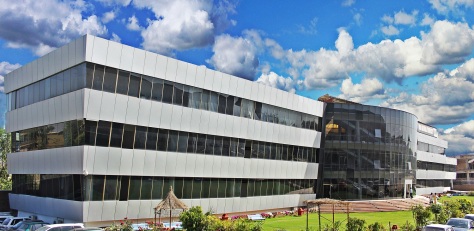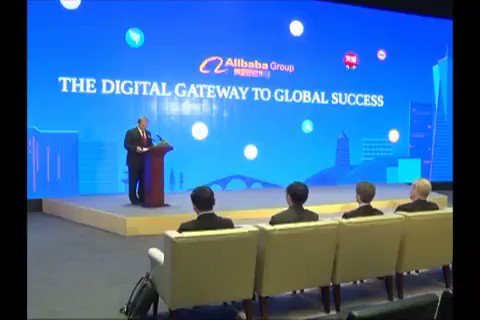At Blueprint Robotics in Baltimore, she works in a factory that builds houses like cars, on an assembly line, using robots that fire thousands of nails into studs each day and never miss. Yarborough operates a machine that lifts floors and walls and packs them onto a flatbed truck, the final step before delivery to a development site where they’ll be pieced together.
“I like being a part of something new, on the cutting edge,” said Yarborough, a single mother who took the job at Blueprint last May.
For all the concern over automation removing jobs from the workforce, companies like Blueprint are actually helping to ease a labour shortage
For all the concern over automation removing jobs from the workforce, companies like Blueprint are actually helping to ease a labour shortage that has crimped construction of residences and commercial properties across the country.
The plants enable developers to fill the gap by having houses and apartment buildings manufactured off-site, for less money and in a fraction of the time. Even Marriott International Inc., the world’s biggest hotel operator, is increasingly turning to modular construction for some of its properties.
To meet growing demand, high-tech plants are opening, and older factories that were shuttered after the last decade’s real estate crash — many in areas such as rural Pennsylvania, where labour costs are cheap — are being revived. Builders hire the factories to manufacture homes in sections, which are transported on trucks, then laid down on foundations by cranes, like giant Legos. Sometimes the modules are fully framed rooms, complete with tile showers and gourmet kitchens.
“This has to be the wave of the future — I don’t know how we solve the labour shortage otherwise,” said John Burns, an Irvine, California-based homebuilding consultant. “What drives modular construction is the ability to build the house more cost-effectively.”
US homebuilders say the labour crunch is their biggest challenge, and that it’s pushing costs up as much as 5.2pc on average, according to National Association of Home Builders/Wells Fargo surveys last year. President Donald Trump’s proposals to crack down on undocumented workers may further squeeze the industry, one heavily dependent on immigrant labour.
The idea of transporting homes in prefabricated sections has roots in the early 1900s, when homesteaders could buy kits from a Sears, Roebuck & Co. catalogue for assembly on their newly acquired plots of land. In the 1980s and 1990s, it became increasingly popular to build lower-cost homes in factories, according to Gary Fleisher, who runs a blog for the industry called Modularhomecoach.com.
Today’s plants are capable of producing bigger buildings with more elaborate designs. The Blueprint factory in Baltimore is one of the first in the US to use robots, Fleisher said.
Taller multifamily buildings, dorms and hotels are increasingly being manufactured indoors. And so are mansions that sell for millions.
“Some builders won’t even advertise they work with modular companies like us,” said Myles Biggs, general manager of Ritz-Craft Corp.’s Pennsylvania construction facility. “You could be driving past a modular home and not even know it, because it looks just like one next door.”
Ritz-Craft can deliver a single-family house in six to eight weeks, on average. Having an indoor facility means weather delays are rarely a factor. Each worker is given a narrow concentration, like tiling floors or sanding drywall, which increases production speed. People without any background in construction can become skilled labourers in two weeks, according to Biggs.
The idea is catching on with Marriottt, which aims to have agreements with North American developers this year to produce about 50 of its Select branded hotels in factories, said Karim Khalifa, senior vice president of global design strategies. In December, Marriott opened a Fairfield Inn in Folsom, California, with 97 rooms — all built at a Guerdon Enterprises plant in Boise, Idaho.
Last month, a collection of Marriott hotel rooms was getting wood-framed walls and ceilings at a Champion Homes factory in Liverpool, Pennsylvania. Even the beds and televisions will be in place before the boxes are shipped through stretches of highway and stacked in Chapel Hill, North Carolina, next month.
“What we like is how well modular is built,” Khalifa said. “These things have all been designed to be transported. They have the integrity of a shipping container.”
Apartment developers, too, are increasingly going with modular construction, especially in fast-growing cities such as Denver and Nashville, Tennessee, said Rich Rozycki, head of Champion Homes’ commercial division, which has seen its pipeline grow 50pc since 2014. The company also has had discussions with national homebuilders looking for a solution to their labour problems, he said.
Labour costs are more favourable for factory construction, according to David Reed, vice president of Champion’s modular division. Workers make about $15 to $20 an hour in rural Pennsylvania. That compares with $50 to $100 an hour in the markets the manufacturers serve, like New York’s Hudson Valley, and the Washington, D.C., area, Reed said.
Builder Kris Megna works with Champion to create houses as large as 10,000 square feet (930 square meters) in the pricey suburbs of Boston. Megna, 31, who founded Dreamline Modular Homes in 2010, said almost any custom design is possible, even though the modules can’t be much bigger than 60 feet by 16 feet (18 meters by 5 meters). Walls between sections can be knocked down for open-concept kitchens, and cut-outs can create vaulted ceilings, he said.
“The house is 60pc complete when it arrives, and that means 60pc of the headaches of building are gone,” Megna said.
— Bloomberg/The Washington Post Service
Published in Dawn, Business & Finance weekly, April 24th, 2017












